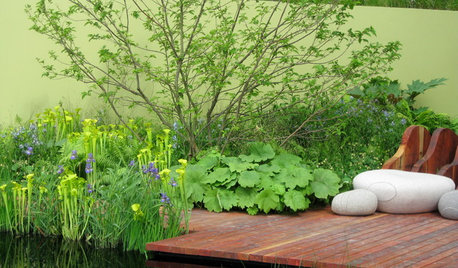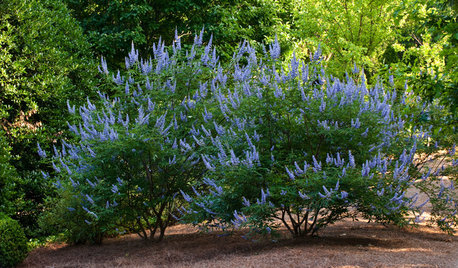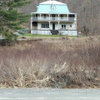Violet's Hot Garden: Puddles
violetwest
10 years ago
Related Stories

GARDENING GUIDESGreat Design Plant: Callirhoe Involucrata Wakes Up Hot Garden Spots
Give a dry and sunny garden a jolt of violet-pink color summer to fall — and watch bees and butterflies flock to the nectar
Full Story
GARDENING GUIDESGreat Design Plant: Violet Silverleaf Thrives on Scant Water
Purple flowers transform silvery, sun-loving Leucophyllum candidum, while its easy care may change your gardening routine
Full Story
COLORNo Need to Shrink From Violet
With shades from soft to rich and uses from a droplet to a wave, there’s a violet that will work for you
Full Story
GARDENING GUIDESGreat Design Plant: Try Blue Bells for Blooms in Dry Soil
This shrub’s violet-blue flowers and silvery foliage brighten low-water gardens all year long
Full Story
LANDSCAPE DESIGNFind Yourself in an Epic Garden in the Shade
Feeling hot and tired gardening in the sun? The world of shade gardening beckons you to its cool mystery
Full Story
GARDENING GUIDESWelcome Sweat Bees to Your Garden Throughout the Growing Season
Look before you swat! These friendly sweat bees will feed on your sweat on a hot summer day, but their main buffet is flowers
Full Story
WINTER GARDENING10 Native Wildflowers to Beautify Your Winter Garden
They stand strong in wind, feed wildlife and are easy to grow. But you may want to add these plants for their looks alone
Full Story
GARDENING FOR BUTTERFLIESGreat Design Plant: Aromatic Aster Keeps on Blooming
Tough as nails, drought loving, a deep fall bloomer ... this aster is a champ in sunny gardens
Full Story
GARDENING GUIDES20 Ways to Create a Chartreuse Splash in the Landscape
Use this hot garden color for plantings, paint and accessories to create a cool outdoor vibe
Full Story
FLOWERS AND PLANTSVitex Agnus-Castus Fills Gardens With Fragrant Blooms and Foliage
Spikes of purple flowers adorn chaste tree’s aromatic foliage throughout the warm season in Southern gardens
Full Story










Yardvaark
violetwestOriginal Author
Related Professionals
McKinney Landscape Contractors · Lynn Landscape Contractors · Round Lake Landscape Contractors · West Palm Beach Landscape Contractors · Oxon Hill Landscape Contractors · Raytown Landscape Contractors · Commerce City Decks, Patios & Outdoor Enclosures · Fort Lee Decks, Patios & Outdoor Enclosures · White Bear Lake Decks, Patios & Outdoor Enclosures · Bakersfield Swimming Pool Builders · Cooper City Swimming Pool Builders · Glendora Swimming Pool Builders · Glenn Heights Swimming Pool Builders · South Riding Swimming Pool Builders · West Covina Swimming Pool BuildersNHBabs z4b-5a NH
violetwestOriginal Author
Yardvaark
violetwestOriginal Author
Yardvaark